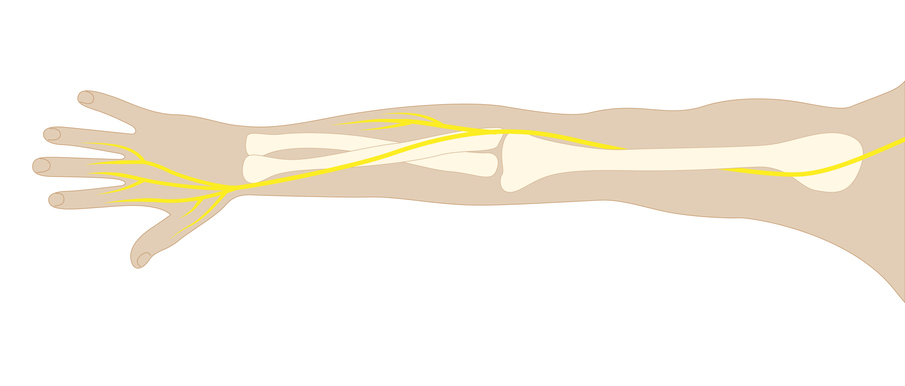Radial Nerve Palsy
Also known as: radial nerve injury, radial nerve dysfunction, radial nerve palsy, crutch palsy, Saturday night palsy, wrist drop
What is radial nerve palsy?
The radial nerve is responsible for sensation and movement along the posterior aspect of the arm and hand. Injury to this nerve is referred to as radial nerve palsy, and the symptoms typically include loss of sensation along the posterior aspect of arm, forearm and hand.

What causes radial nerve injuries?
More common causes of injury to the radial nerve include compression from crutches (crutch palsy) or from falling asleep with one’s arm hanging over a chair (Saturday night palsy). In both cases, the nerve gets compressed/squeezed in the armpit or against the humerus, the upper arm bone. A more severe injury to the radial nerve can occur from humerus fractures.
What are the symptoms of radial nerve palsy?
Pain, weakness, and loss of function are the most common symptoms of radial nerve palsy. Typically, the affected arm will have decreased sensation along the posterior/dorsal aspect of the arm, forearm and hand, and weakness of the muscles that perform extension of the wrist and fingers. Oftentimes, patients with radial nerve palsy will have a “wrist drop."
How can radial nerve injuries be prevented?
In some cases, it’s difficult to prevent radial nerve injuries. However, taking steps such as using proper ergonomics while working at a desk or in other work settings can help. Practicing good posture or using pillows to keep the arms and hands in comfortable positions while sleeping are also important for helping to prevent radial nerve injuries.
How can radial nerve palsy affect children?
Radial nerve palsy can be challenging for children in the same way it can affect adults. The long term consequences in children can lead to bone and joint deformities.
What are radial nerve palsy treatments?
Mild cases of radial nerve palsy may resolve with therapy alone. Therapy for radial nerve injury includes specialized splints and range of motion exercises to prevent permanent joint deformities from developing. More severe cases —that do not demonstrate improvement within the first few weeks after injury— require further evaluation, which may include nerve conduction studies and electromyography and/or specialized nerve imaging.
If surgery is necessary, the procedure may include neurolysis (removal of scar tissue around the nerve), repair or reconstruction of the nerve with nerve grafts. The timing of decisions for surgery depends upon the mechanism and severity of the injury.
If the nerve does not recover, and there is a persistent weakness in the muscles of extension, tendon transfer procedures are considered.
What is the rehabilitation process for radial nerve injuries?
The rehabilitation process after the treatment of a radial nerve injury may involve wearing a splint or cast to protect the hand and arm. Other therapies that can help in rehabilitation include physical therapy and transcutaneous electrical nerve stimulation (TENS). As long as the affected nerve does not have tears or lacerations, the typical recovery time for a radial nerve injury is around four months.
Reviewed by: Aaron Berger, MD
This page was last updated on: June 03, 2025 10:46 AM